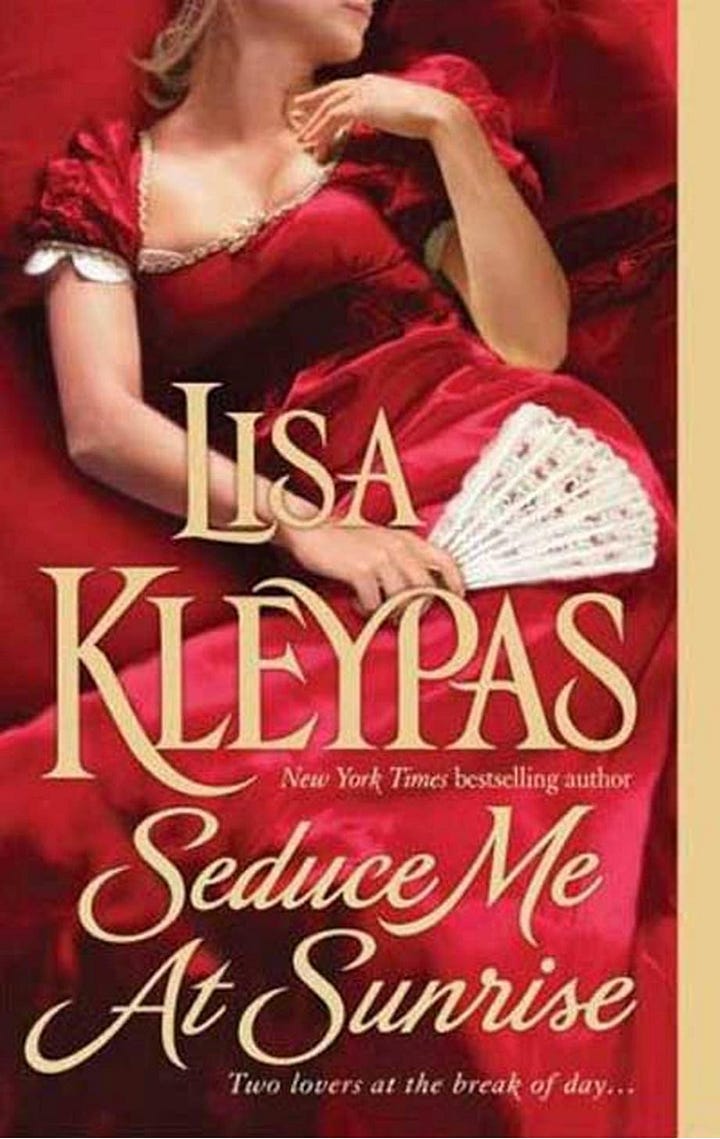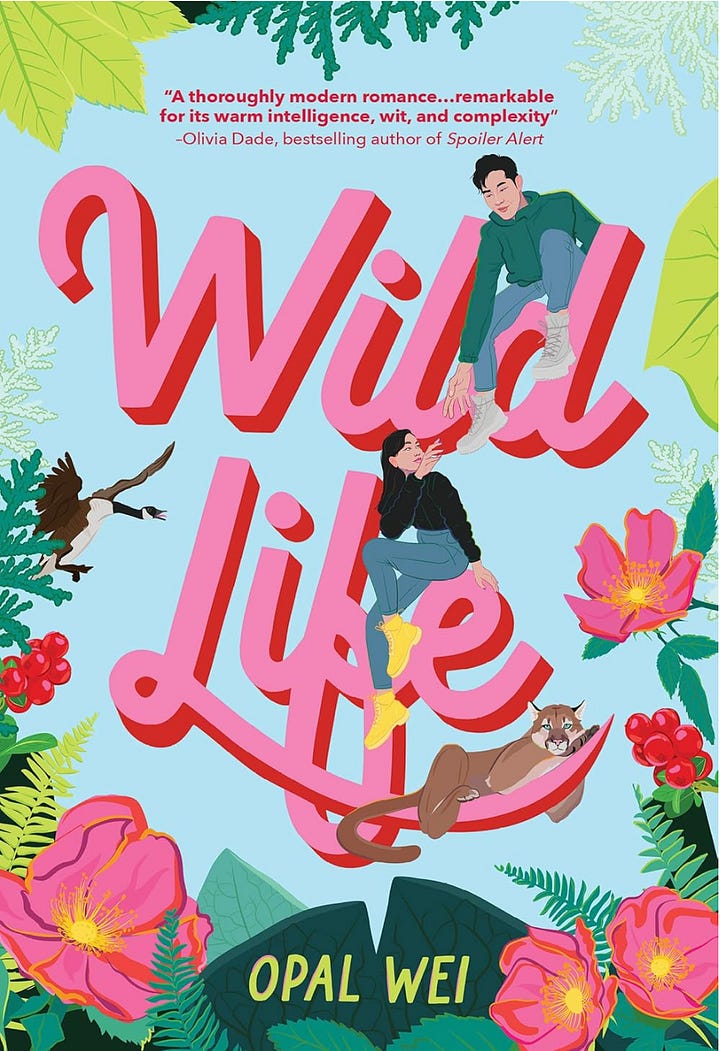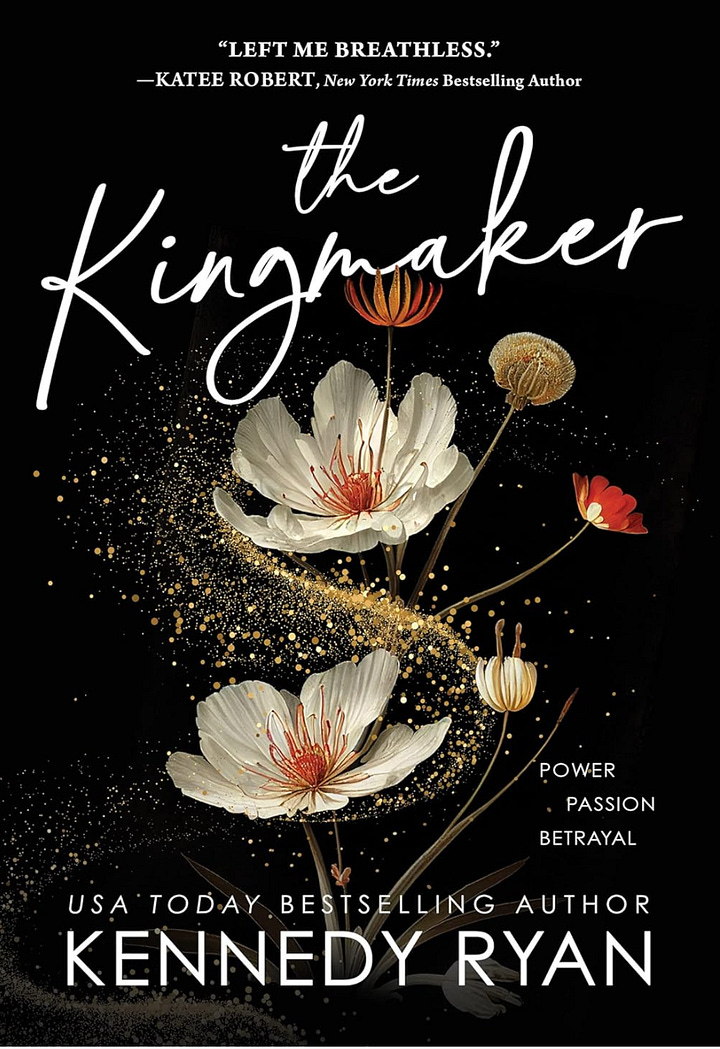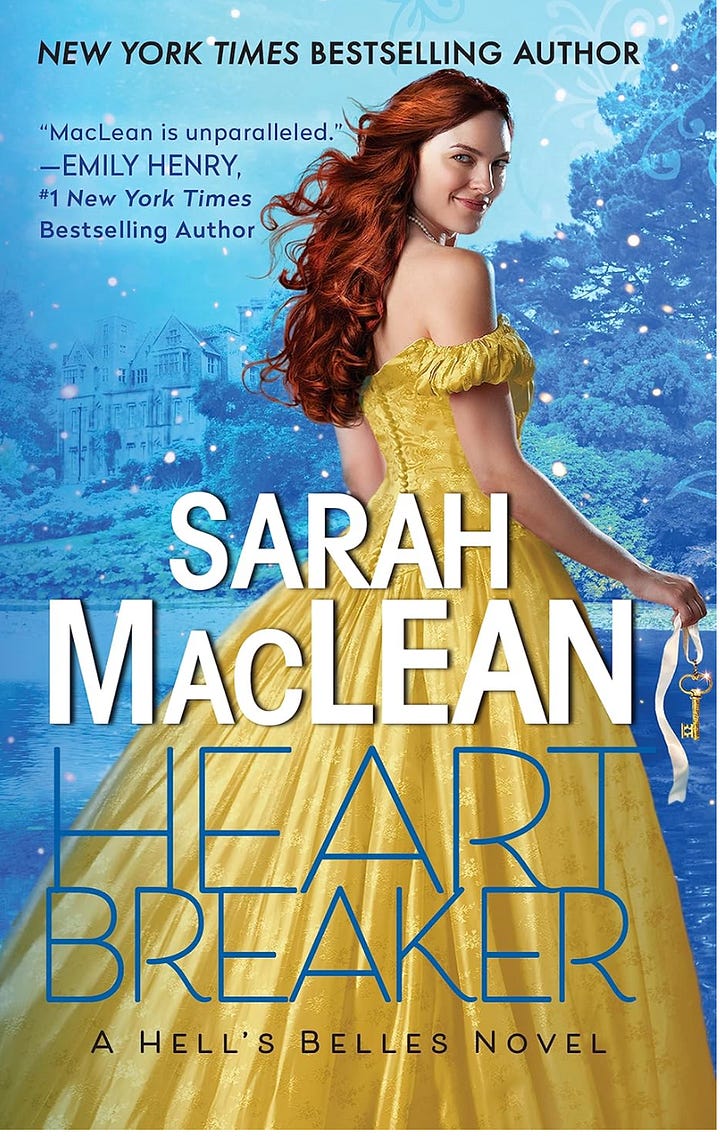Dear readers,
The last time I wrote to you, I talked a little bit about all the writing I’d been doing lately…and I’m so, so happy and relieved and excited (and also a tiny bit shocked) to write to you again to say that I’ve recently turned in the full draft of The Paris Match. Sakes alive, let me tell you what! It felt touch and go there for awhile, since—like many of you—I have been balancing all of my to-dos against the crushing existential dread of, you know. Being aware of the world!
So, it feels like a gift and an achievement to have finished the draft of this novel I’m so, so excited for you to read. There’s more for me to do on The Paris Match in the coming weeks, but what I can tell you is that I’ll have an official release date for you so soooooon!
But also when I wrote to you last, I told you that I’d been doing a lot of thinking about writing and words, too—that I’d been wondering and worrying about living in a time where we’re discouraged from slowing down in relation to these things, that we’re all the time being flooded with words that are meant to scare us and inflame us and send us off in search of more scary, inflaming words so that we never ever stop being scared and inflamed and inactive. I mentioned to you then that you might see me back here talking about words in my own slow, attentive way.
And so, here I am. Come to tell you about some of that attentiveness.
Now, if you only subscribe to this newsletter to get updates on my books, you can probably stop here: yes, I finished The Paris Match, and that’s the news! But if you also subscribe because you enjoy my musings on writing craft/prose style, especially in romance, I hope you’ll read on to hear more about something I love a whole lot.
And that something is…
The cumulative sentence (lol, what a NERD. so WHAT!).
If you are out there thinking, Kate, I’ve never heard of a cumulative sentence?!, don’t worry about it. This is not a commonly-used label for sentences, and in fact, as a label, it’s fairly new as these things go, coined in the 1960s by the rhetorician Francis Christensen. Christensen was not only interested in defining this type of sentence—in explaining its working grammatical parts, that is—but he was also interested in the effect of this type of sentence. It probably will come as no surprise that I’m most interested in the effect, too.
I’m interested in how a cumulative sentence shapes a reader’s experience.
Especially in a romance novel.




So, let me first do my best to explain to you (briefly, imperfectly) what a cumulative sentence is, using a favorite passage…from, of course, a favorite romance novel:
He was still as handsome as the devil, with those black eyes and that wicked mouth, the austere angles of nose and jaw, the high planes of his cheekbones. There were new lines, however, deep, bitter grooves that ran from nose to mouth, and the trace of a permanent frown between his thick brows. (Lisa Kleypas, Seduce Me at Sunrise, 85)
Both of these sentences are cumulative, and the best way to see that is to pay attention to what’s in bold, above. That’s what your English teacher would probably call a main clause or an independent clause—basically, what’s in bold is a complete sentence all on its own. In other words, Lisa Kleypas could have left it at “He was still as handsome as the devil.”
But instead, what Kleypas does is add a few modifiers after: she gives details that make clear what it means to be “as handsome as the devil.” It means to be black-eyed with a wicked mouth, and it means to have an austerely angled nose and jaw, and it means to have high cheekbones. In the next sentence, she does it again: she tells us that Kev has new lines in his face, which is a complete sentence all on its own. But then she modifies that: she says the lines are deep and bitter grooves, and she tells us where they are, and she tells us that there’s a whole other line—“the trace of a permanent frown” between his brows (and not just any brows, either…thick ones. Modified brows).
It might be fair to read about the cumulative sentence and just think, ok?? So it’s just description? But the thing is, a cumulative sentence commits to a type of description. Think of it this way: Lisa Kleypas could have said: “He was handsome as the devil. He had black eyes and a wicked mouth. His nose and jaw were formed at austere angles and he had high cheekbones.” Functionally, that says the same thing, but it splits the sentence and the description up into pieces, whereas a cumulative sentence seeks to keep the reader’s mind moving toward more and more specificity. Kleypas says “handsome as the devil,” and then invites you to move your gaze over Kev’s face, without interruption, as you gather the specific details of it. In that second sentence, it’s the same: Win (the heroine of this novel) notices these new lines on Kev’s face but then takes in the particularities of them—they are deep lines—no, not just deep, they are bitter; they are actually better described as grooves.
With a cumulative sentence, we are accumulating Win’s impressions as she has them. We are following her gaze, her perception—we are watching that perception expand and change and gather meaning.
Judging by the passage I selected above, it shouldn’t be a surprise to you that you can often find cumulative sentences hanging out in a romance novel’s first introduction of a main character. Here’s one I love, from Opal Wei’s recent Wild Life:
He even seemed to care, his unlined forehead wrinkling in confusion as she talked at him, unlike the million other expensively but casually dressed West Coast dudes like him, with their tousled hair and their grins, and their lean surf and ski bodies. (17)
This is a cumulative sentence that’s doing a lot—it’s telling us that his forehead is unlined but wrinkled in confusion; it’s telling us that this small detail is what makes him distinct from other men she comes across regularly, even if he shares some of their physical qualities.
Sometimes, writers do what I would call cumulative fragments, which have the same impact as cumulative sentences, but with a more intentionally staccato sound to them. Here’s one, from Kennedy Ryan’s The Kingmaker:
He has one of those magazine faces. Not exactly like a model, but a “someone” face. An “I should know you” face. (The Kingmaker, Loc 425)
The two fragments here (“Not exactly like a model, but a ’someone’ face” and “An ‘I should know you face’”) both modify that first independent clause—they provide additional specificity for “magazine face.” Similarly, look how Sarah MacLean accumulates fragments that give way to detail when introducing Adelaide Frampton in Heartbreaker:
If pressed, they might add tall. Or perhaps ordinary. Certainly spinster was not out of the realm of possibility for the twenty-six year old woman who had absolutely no hope of prospects, what with her flame red hair always tucked tightly beneath a pristine cap and the way she wore her collars high and out of fashion, her frocks drab, and her face common, without rouge or kohl. (Heartbreaker, 10)
MacLean’s use of cumulative fragments is pretty complex: ordinary and spinster are both additional modifications to tall—other words that someone might reach for to label Adelaide. After that, she opens up the final fragment to contain a bunch of other modifiers…about Adelaide’s hair (flame red, tucked tightly), her cap (pristine), her necklines (high and out of fashion), her dresses (drab), her face (common, no cosmetics). Notice how that description goes top down, like your gaze might; notice how it then returns up again, to her face.
To be clear, of course romance novels are not the only place to find sentences/descriptions like this. Once you know about cumulative sentences, you’ll probably see them a lot in the fiction you read, and Christensen himself made the argument that the cumulative sentence was a syntactic feature of a lot of modern writing in English. But I do think that this type of sentence style plays a special role in the thematic work romance is so often doing, because I think cumulative sentences are unique for the way they both mimic and build intimacy: between the author and reader (MacLean’s sentence is a good example of that, since you’re seeing Adelaide through the omniscient narrator’s view here), and between the reader and the main character whose perspective you are experiencing (Ryan’s sentence nicely captures this, as it gives you a sense of how Lennix sees and describes what she encounters in the world), and—most importantly, for the arc of the romance—between that main character and the character they are falling in love with.
When I say “intimacy” here, I mean it in its broadest sense: not just physical intimacy (though a word on that, below), but instead the particular closeness that comes from deep familiarity. This familiarity that extends beyond surface impressions of another person and becomes a knowingness about their nature, their most private self. Cumulative sentences provide a syntactic structure for mimicking that process of knowing: in Seduce Me at Sunrise, it’s Win seeing that the lines around Kev’s mouth are deep, but then understanding that they’re more than deep. They are bitter. Her expanding impressions are evidence of her knowing Kev, of the intimacy that exists already between them. When we find passages of description in romance, especially those offered to us in one character’s close point of view, I think they are often structured in this cumulative way because they add to the broader project of representing and celebrating intimacy. And that, of course, is central to the genre.
This type of intimacy is, for me, even more central to the genre than whatever physical intimacy an author might choose to demonstrate on the page of their romance, but it must be said that you can also find a lot of cumulative sentences in the pages of sex scenes. I think they work similarly in how they build toward intimacy, but I also think, syntactically, they build toward something more…pointed. Here’s another example from Heartbreaker, so you can see how it works from the same author, in a different context:
And so she did as he told her, holding him tight to her, where his tongue worked in glorious rhythm, back and forth, again and again as she rocked against him, gasping, holding back her screams, chasing that glorious pleasure that was just out of reach (Heartbreaker, 180)
The main clause there is in bold, and everything else is a modifier: holding him tight to her is what he’s told her to do, where his tongue worked modifies what’s happening at the place where she’s holding him tight, back and forth modifies how his tongue is working, and so on. Like our other cumulative sentences, this one builds and expands in its impressions: point of contact, what’s happening at the point of contact, what the point of contact is causing her to do in response, how she feels because of the point of contact.
The thing this cumulative sentence is building to is something more acute, more explosive, than the intimacy that comes from careful observation. Cumulative sentences work very well, syntactically, for sex scenes, and if you have an eye for them, I suspect you’ll notice them as a feature.
In a way, I think the cumulative sentence represents, in miniature, not just what is best about all fiction, but what is specifically best about romance. I think stories work best when they are cumulative in nature: when they are crafted so that they build and build and build toward a bigger idea. So, sure, Frankenstein is a book about a guy who gets obsessed with the act of creation, only to regret and run from his “success”—but it’s also about science and power and loneliness and monstrosity and the unbearable weight of being alive. The effect of all those things is cumulative, not well-understood from only reading, say, the first couple of chapters.
And for me, the best romances are similar in the way that they have something to say about how we build our most precious relationships. Accumulating detail about someone you love is a precious human instinct; moreover, accumulating such detail in order to honor them—in order to know how to love someone better, more completely, more sensitively—is the payoff of a truly satisfying romance. The truth is, part of how Win loves Kev is for those bitter grooves on his face: she is one of the few people in his life who can see beyond his grim strength to the suffering that lies beyond. She knows, too, that the suffering he experiences is because of how deeply he loves her and how hard he has worked to deny himself that love. Throughout the book, her work is, in part, a project of filling in—with her softness, with her sweetness—the bitter grooves that have entrenched themselves onto Kev’s soul.
There’s one more thing I love about the cumulative sentence in romance prose, and those of you who have followed me for some time will not be surprised to hear it. I think the instinct for this kind of detail-gathering in romance is sacred because it is an accumulative instinct that is not material, not greedy, not destructive, not competitive. It is acquisition for the sake of knowing better and loving better, not taking more and exploiting more. In the romances that mean the most to me as a reader, accumulation is a human process, not a market process: it honors what should certainly be the truest and most rewarding project of our lives, and that is to know and love each other, fully and well.
And wouldn’t it be revolutionary?
Wouldn’t it be something revolutionary, if we all thought of accumulation like this?
love y’all (but not in a market-driven way)
xoxo
kate 🖤




Kate, the way I am SEATED any time you take us deep into syntax and the art of writing romance. So much of my writing is instinctual and allowing myself to "unlearn" the rules about how sentences "should" be constructed. One of the things I love about writing romance is how many different ways you can write your way to the emotional truth of a story.
I cannot wait for THE PARIS MATCH. It combines my two favorite things: Paris and your beautiful prose.
You are one of my favorite romance writers, and this post highlights all the reasons why. You’re intentional, you care, and you infuse your prose with so much warmth. Can’t wait for the new book!